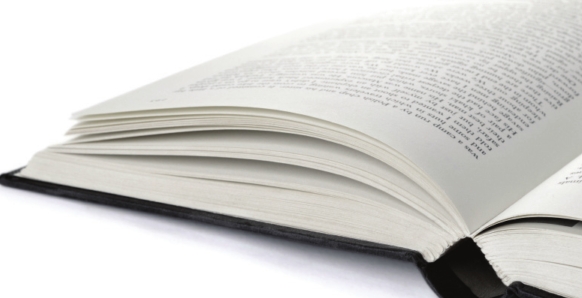
How to know what you don’t need
Christine Mayeur
“The Life Changing Magic of Tidying Up”
by Marie Kondo
Plot: Marie Kondo gives a step-bystep guide to de-clutter your home.
She gives real-life accounts of her clients’ and her own struggles to ditch your excess and tchotchkes to have the home and lifestyle you’ve always drooled over in home magazines. Step 1. Visualize the home life you’ve always wanted. Think of the gorgeous homes on TV shows where everything is tidy and perfectly curated. Step 2. Take everything out and discard. First you have to take stock of what you have. Only then can you decide what stays and what goes. Step 3. Keep only what gives you joy and gets you to that magazine cut outs. The key is to ask yourself if the item gives you joy. If it doesn’t, thank it for its service and send it to the donate pile. Step 4. Make sure everything has a place and put it there. Organizing things daily after your purge helps you to be more mindful and careful with the things you have.
Why would you recommend this book: If the idea of “cleaning one thing at a time” or “tidying a few things everyday” sound like slow torture to you, you’re not alone. This book is all about big change in one fail swoop. As a new mom, my body has recently changed and a good portion of my clothes either don’t fit anymore or just aren’t quite right. Going through this book and then following Kondo’s advice, I found myself admitting about some often worn items, “well, it’s something to wear.” The ideal response should be something along the lines of, “I can’t wait to wear this!” Those “something to wear” items keep you back from happiness and living the kind of life you want, if only a little bit at a time.
That moment you were on the edge of your seat: For
me, the most thrilling parts are the personal and client stories that
she peppers throughout the book. Kondo has always had the mind of an
organizer, she details events of her childhood in which she
systematically cleaned and re-cleaned her room as well as her family
member’s
spaces. She found that no one could truly tidy another’s space because
each person has their own vision of a joyful life. Client accounts make
you feel like you are not alone in your clutter shame, and that there is
a way to improve. Kondo herself struggled with clutter, despite reading
and following
popular books on tidiness, she found that she would relapse and
accumulate items. The light at the end of the tunnel is the KonMari
Method, her strict but reverent way of decluttering has kept her and
countless clients tidy.
Lasting impressions: There
is a somewhat spiritual undercurrent to the book. This, in a way, helps
you to part with items that have sentimental or other values to them,
but do not fit with your taste. You are encouraged to conduct your
tidying in silence or ambient music, handling each item to connect with
your first instincts or reaction when handling it. Kondo talks about the
power of human touch as transferring energy and it becomes evident in
items that are loved and which are not (think of a wonderful old leather
chair that gets better with age). The concept of showing gratitude to
your things, no matter if you keep or toss them, has a powerful effect
on how you view your home. Being connected to the things that truly
bring you happiness will keep you from falling off the tidy wagon.
What are you reading next?
“Gulp” by Mary Roach
Christine Mayeur is an urban planner based in Washington, D.C.
READ ON: Each month CityLife will feature a book review from a local voice in the community.
If you would like to share a favorite book, email [email protected].